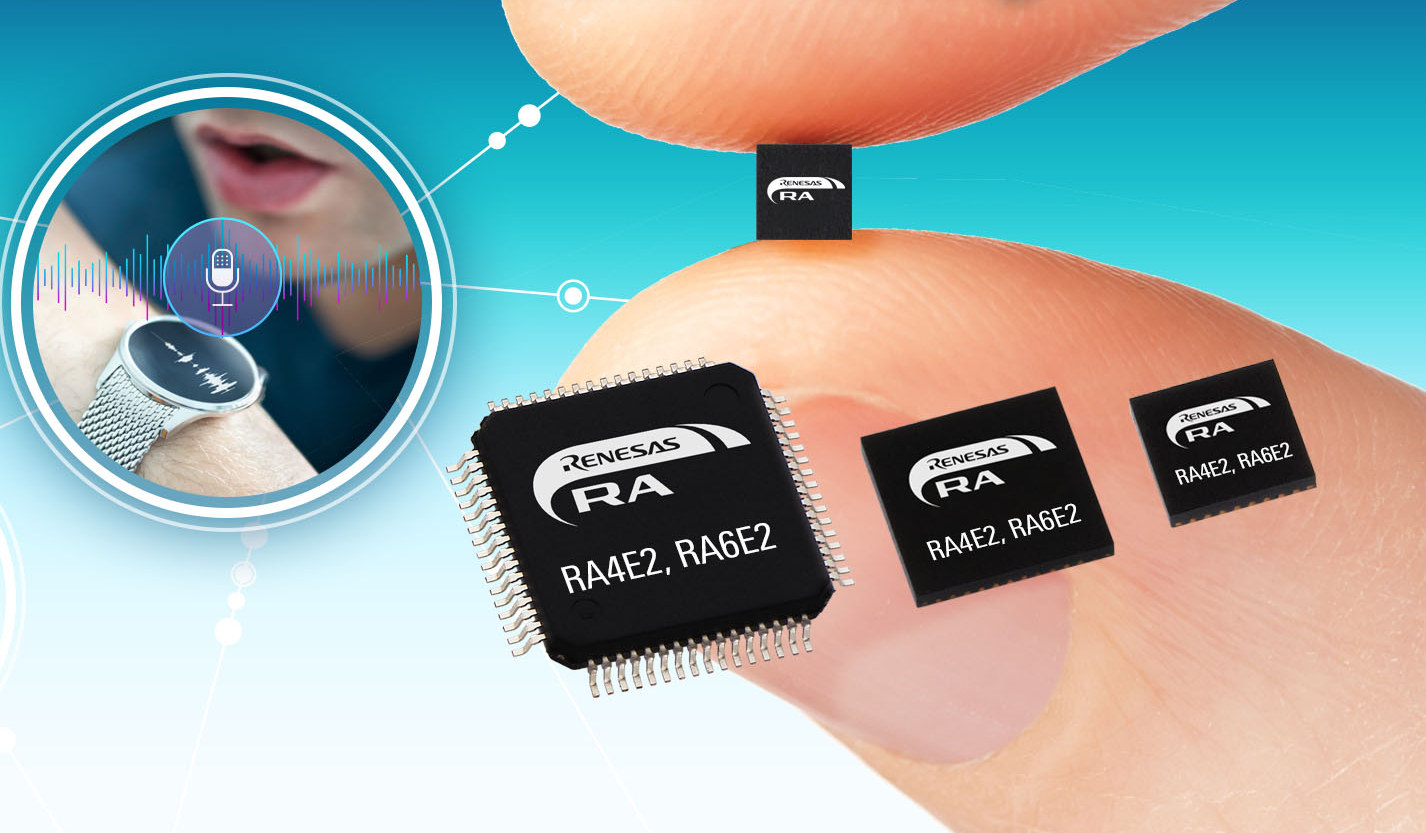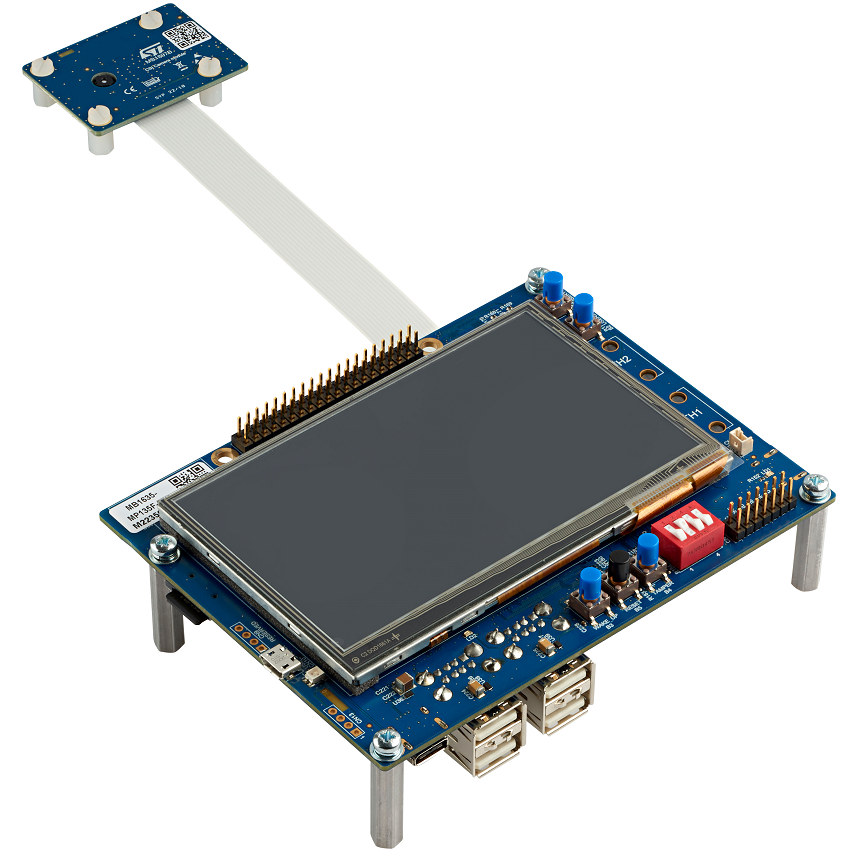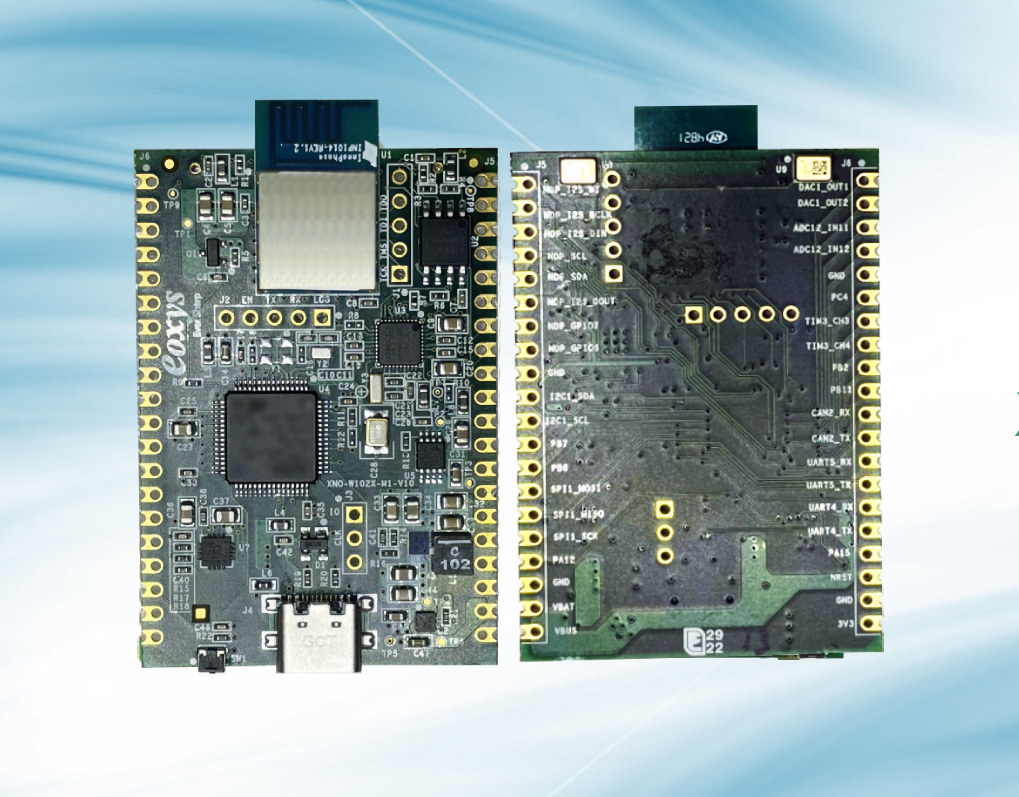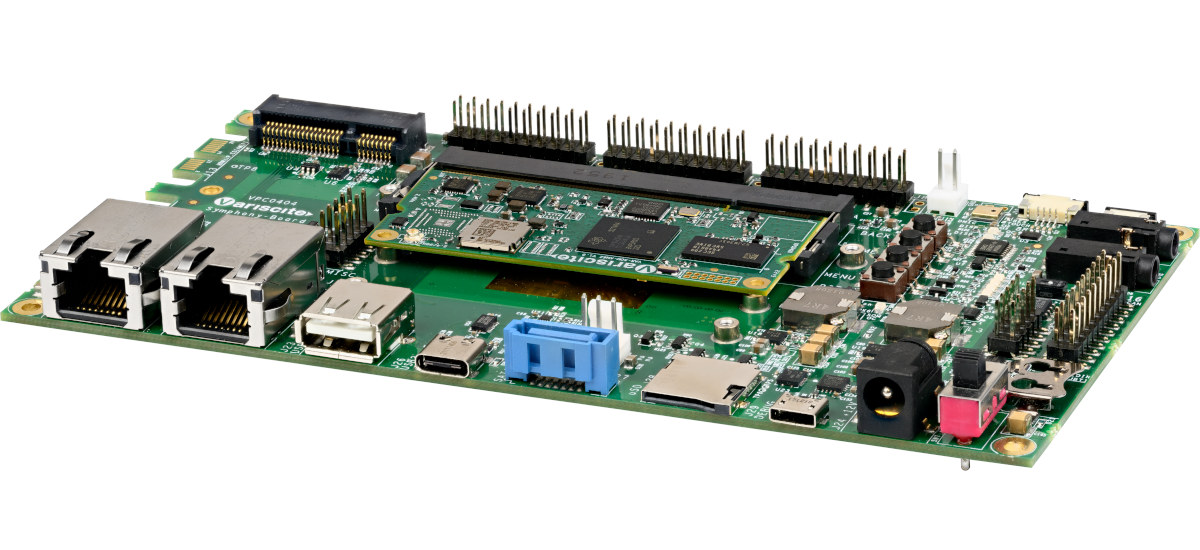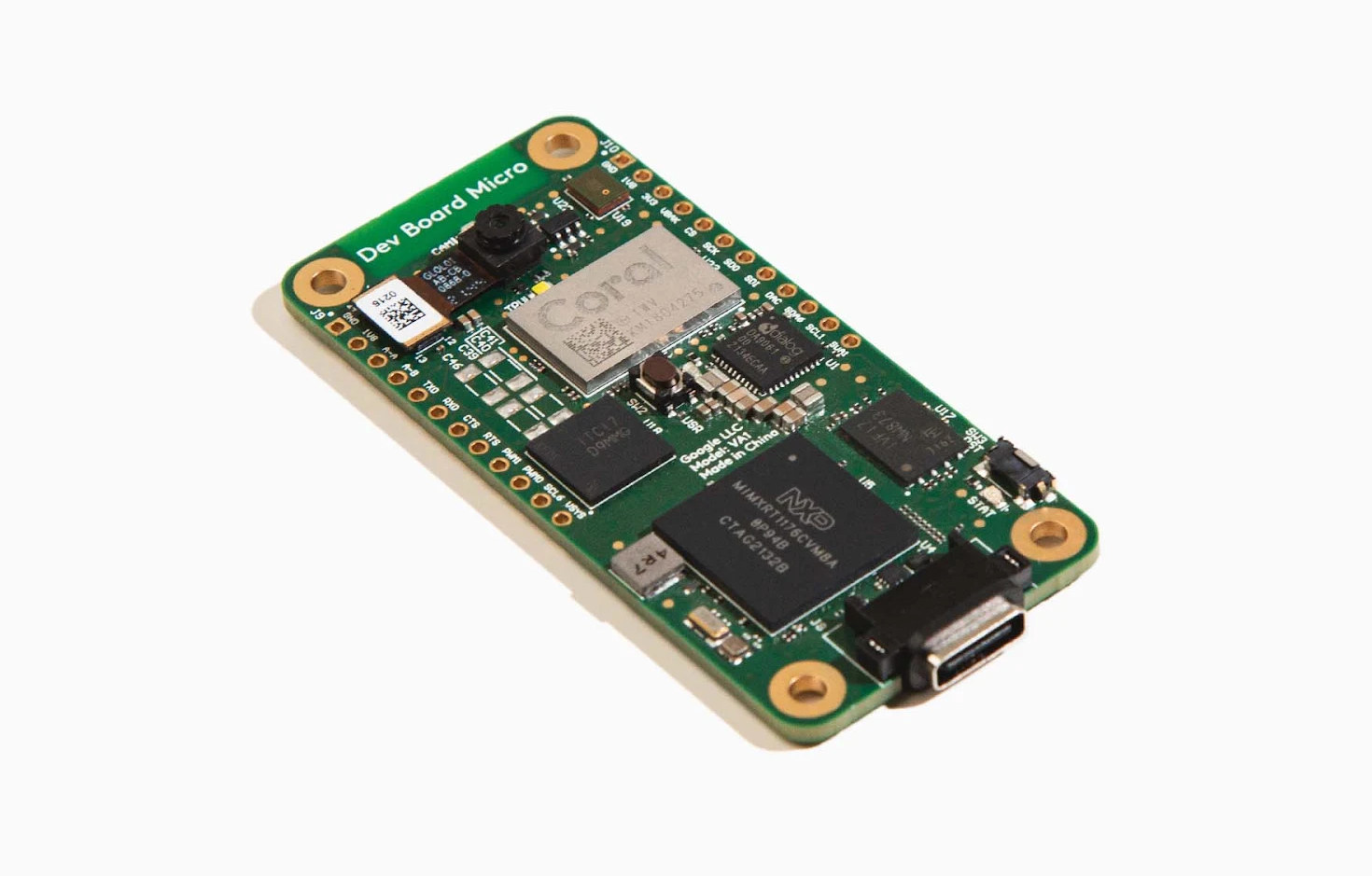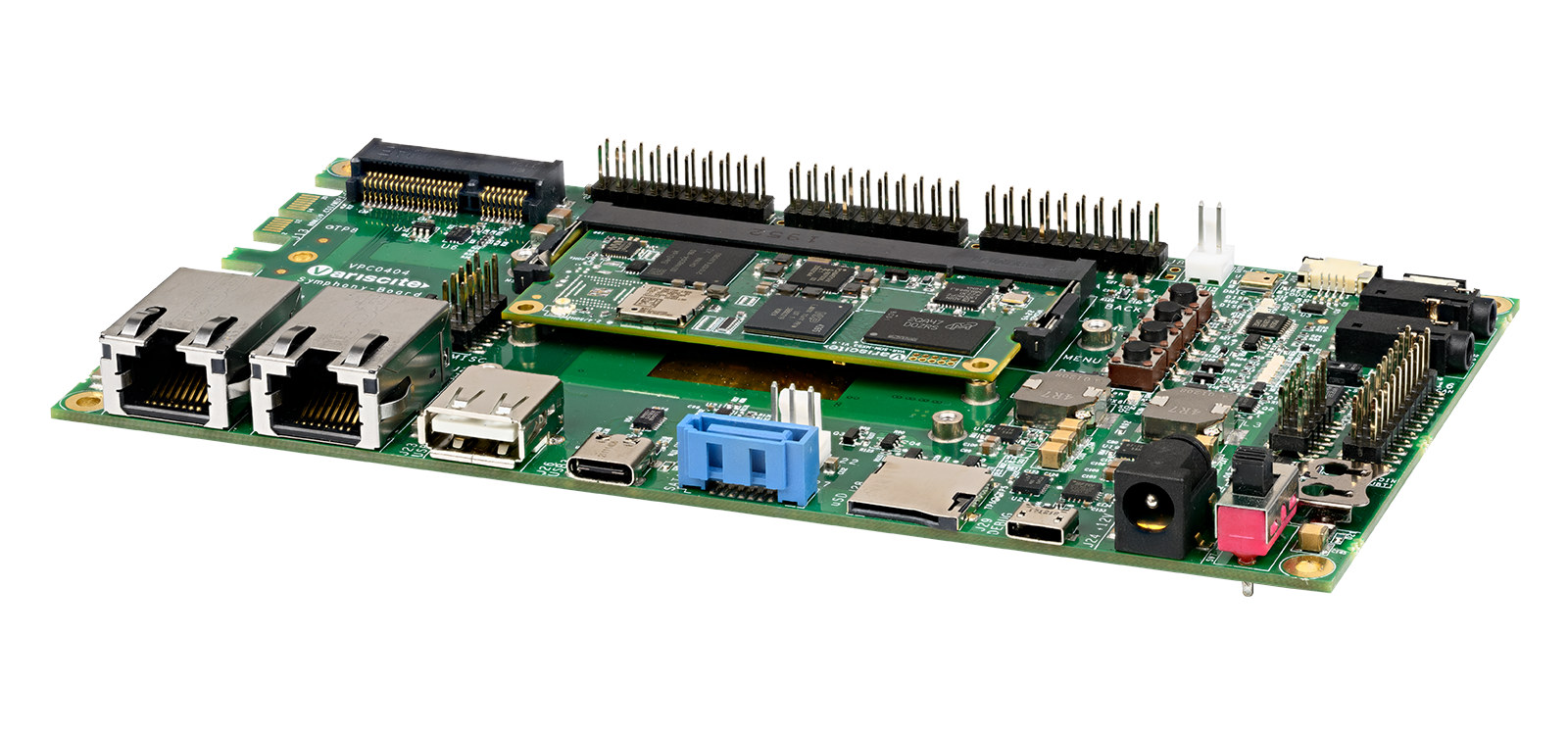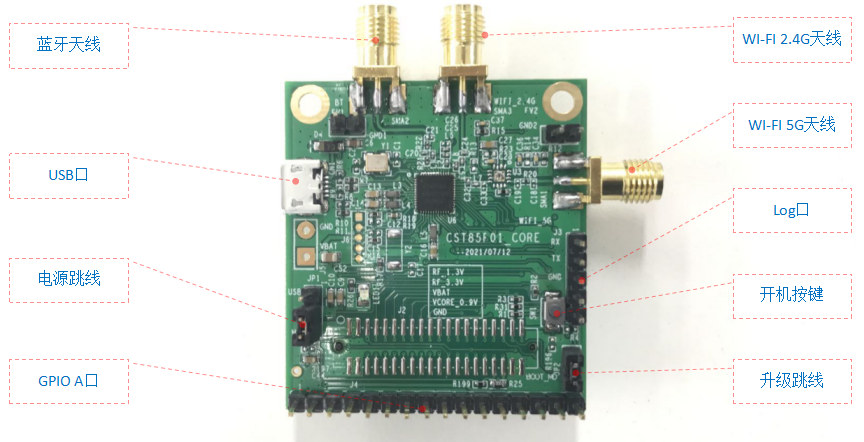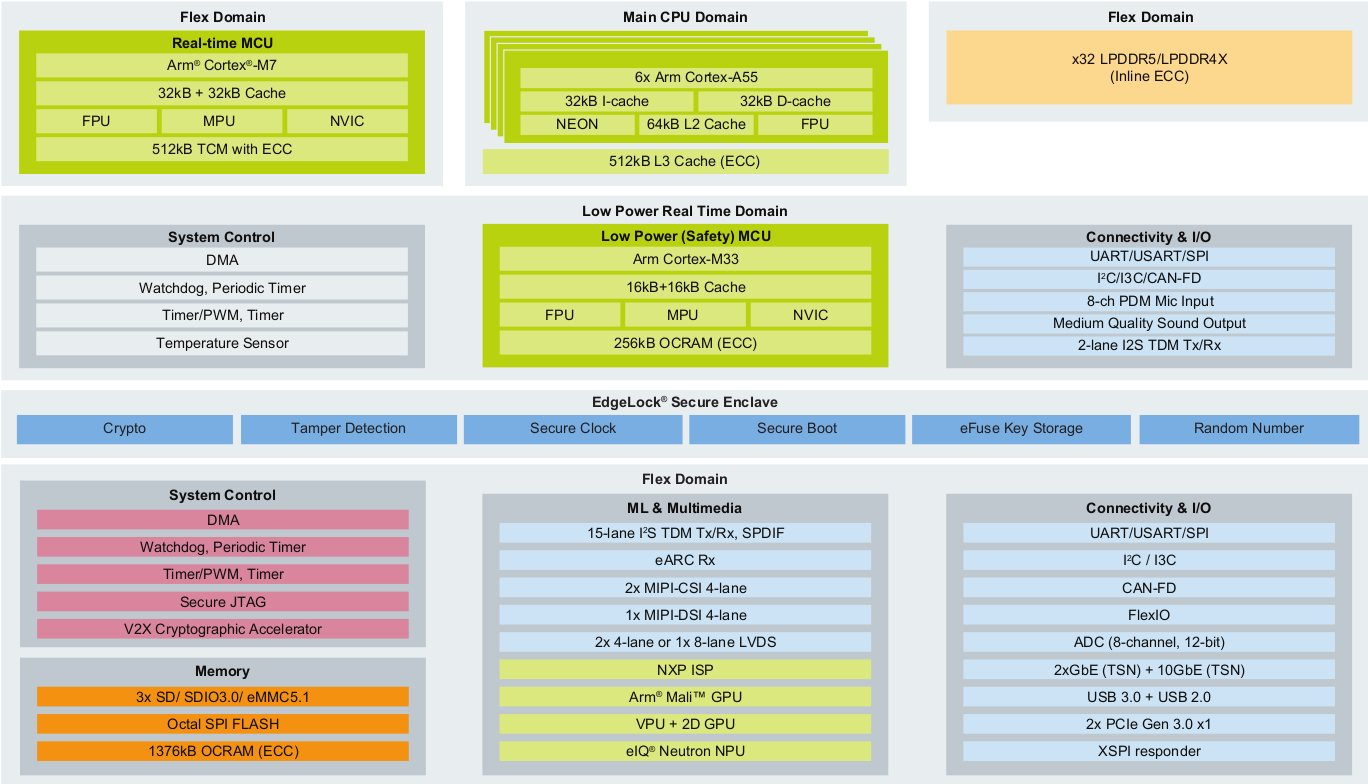Renesas Electronics has added two new groups to its 32-bit RA family of microcontrollers (MCUs) with the 100 MHz RA4E2 and 200 MHz RA6E2 Arm Cortex-M33 microcontrollers designed for “high-performance applications” in small packages such as sensing, gaming, wearables, and appliances. The new microcontrollers are equipped with 40 KB SRAM, 128 KB or 256 KB flash, and integrate various on-chip interfaces such as CAN FD, USB, QSPI, SSI, and I3C interfaces to offer an easy upgrade path for products based on other members of the Renesas RA Family. Renesas RA4E2 MCU group Both the RA4E2 and the RA6E2 are the most cost-effective microcontroller groups of the RA family with integrated CAN FD, with the RA4E2 group especially well-suited to cost-sensitive applications and other systems requiring relatively high performance, low power consumption, and/or small package size. RA4E2 key features: CPU – Arm Cortex-M33 core with TrustZone @ up to 100 MHz […]
STMicro introduces cost-optimized STM32MP13 Cortex-A7 microprocessor
STMicroelectronics’ STM32MP13 1 GHz single-core Arm Cortex-A7 microprocessor series is the latest addition to the Linux-capable STM32MP1 family, with a cost-optimized design that does without the Cortex-M4 real-time core found in the original STM32MP15 series, while still offering Ethernet, CAN FD, camera and display depending on the specific SKU: STM32MP131, STTM32MP133, or STM32MP135. STM32MP131 The STM32MP131 is a single-core Cortex-A7 core clocked at 650 MHz or 1GHz with Ethernet connectivity and is the most cost-effective part of the new STM32MP13 series. Four parts are available in three different packet sizes (TGBGA 289, TFBGA 320, and LFBGA 289) as well as some parts with “advanced security features” that include a cryptographic accelerator, memory protections, code isolation mechanisms for runtime protection, functions to ensure platform authentication, and a complete security ecosystem. The STM32MP131 can run entry-level Linux, bare metal or RTOS systems with Microsoft Azure RTOS pre-integrated. STM32MP133 The STM32MP133 single-core Cortex-A7 […]
Eoxys Xeno+ Nano ML board combines NuMicro M2354 or STM32L4 MCU with Talaria TWO ultra low power WiFi & BLE 5.0 module
Eoxys Xeno+ Nano ML is a wireless machine learning (ML) board with either Nuvoton NuMicro M2354 or STMicro STM32L4 microcontroller, InnoPhase IoT’s Talaria TWO ultra-low power Wi-Fi and BLE 5.0 module, and the Syntiant Core 2 NDP120 neural decision processor we first noticed in the Arduino Nicla Voice module a few weeks ago. The boards/modules are designed for intelligent and secure IoT devices for smart home, industrial, and medical automation applications, and the company claims it can be used in Wi-Fi IoT sensors with up to 10+ years thanks to the low-power chips and circuitry used in the design. Eoxys Xeno+ Nano ML specifications: General purpose MCU (one or the other) STMicro STM32L4 Arm Cortex-M4 microcontroller at 80MHz with 1MB flash, 128KB/352KB SRAM Nuvoton NuMicro M2354 Arm Cortex-M23 microcontroller at 96MHz with 1MB flash, 128KB SRAM. Wireless module Innophase Talaria TWO ultra-low-power 2.4GHz 802.11b/n/g WiFi 4 and Bluetooth LE 5.0 […]
VAR-SOM-AM62 System-on-Module features TI AM625x Cortex-A53/M4 SoC
Variscite VAR-SOM-AM62 is a System-on-Module (SoM) powered by a Texas Instruments Ti AM625x quad-core Cortex-A53 processor @ up to 1.4 GHz with a 400MHz Cortex-M4F cores and 333MHz PRU real-time co-processors to control I/Os. The module also supports up to 4GB RAM and 128GB eMMC flash, features a single or dual-band WiFi + BT/BLE5.2 module, and offers up to 3x CAN Bus, dual GbE, audio, camera in, and dual USB, among other interfaces. It is designed for industrial applications with a -40 to 85°C operating temperature range. VAR-SOM-AM62 specifications: SoC – Texas Instruments Sitara AM62x (AM6252 or AM6254) with Up to 4x Arm Cortex-A53 @ 1.4 GHz 1x Arm Cortex M4F up to @ 400 MHz 1x PRUSS up to @ 333 MHz (only in industrial-grade modules) GPUs – 3D GPU with OpenGL ES 3.1 & Vulkan1.2, 2D graphics engine System Memory – 512MB to 4GB DDR4-3200 RAM @ 800MHz […]
Coral Dev Board Micro combines NXP i.MX RT1176 MCU with Edge TPU in Pi Zero form factor
Coral Dev Board Micro is the latest iteration of Google’s Edge AI devkit with an NXP i.MX RT1176 Cortex-M7/M4 crossover processor/microcontroller coupled with the company’s 4 TOPS Edge TPU, a camera, and a microphone in a board that’s about the size of a Raspberry Pi Zero SBC. The new board follows the original NXP i.MX 8M-based Coral Dev board that was introduced in 2019, and Coral Dev Board mini based on MediaTek MT8167S processor launched in 2020, and keeps with the trend of providing more compact solutions with lower-end host processors for edge AI. Coral Dev Board Micro specifications: MCU – NXP i.MX RT1176 processor with an Arm Cortex-M7 core @ up to 1 GHz, Cortex-M4 core up to 400 MHz, 2MB internal SRAM, 2D graphics accelerators; System Memory – 512 Mbit (64 MB) RAM Storage – 1 Gbit (128 MB) flash memory ML accelerator – Coral Edge TPU coprocessor […]
VAR-SOM-MX93 SO-DIMM NXP i.MX 93 SoM features WiFi, Bluetooth, Audio codec
Variscite VAR-SOM-MX93 is a 200-pin SO-DIMM system-on-module based on NXP i.MX 93 dual-core Cortex-A55/M33 AI processor with up to 2 GB LPDDR4 RAM, 64GB eMMC flash, and onboard WiFi & Bluetooth module and audio driver. The Variscite module follows the announcement of two other NXP i.MX 93 system-on-modules, namely the Forlinx FET-MX9352-C with board-to-board connectors and the iWave Systems iW-RainboW-G50M LGA module compliant with OSM Size L form factor to be soldered directly on the carrier board. VAR-SOM-MX93 specifications: SoC – NXP i.MX 93 with up to 2x Cortex-A55 cores @ 1.7GHz, 1x Cortex-M33 real-time co-processor @ 250 MHz, 0.5 TOPS NPU, 2D PxP graphics engine System Memory – 512MB to 2GB LPDDR4 Storage – 8 to 64GB eMMC flash, 4KB EEPROM Ethernet – ADIN1300 Gigabit Ethernet PHY Wireless module Single-band 802.11 b/g/n WiFi 4 or dual-band 802.11 ac/a/b/g/n WiFi 5 Bluetooth 5.2 classic + LE Audio – Unnamed Audio […]
CHIPSEA CST85F01 480 MHz Cortex-M4 MCU supports dual-band WiFi 6 and Bluetooth 5.0 LE
CHIPSEA CST85F01 is an Arm Cortex-M4F microcontroller clocked at up to 480 MHz and designed for IoT applications with dual-band (2.4/5.0 GHz) WiFi 6 with TWT (Target Wake Time) support, Bluetooth 5.0 LE, and a range of I/Os. Following the recent availability of 2.4 GHz WiFi 6 IoT chips such as Espressif Systems ESP32-C6 and Bouffalo Lab BL616, CHIPSEA CST85F01 offers an alternative with dual-band WiFi 6 connectivity while we are waiting for the launch of the ESP32-C5 RISC-V microcontroller. CST85F01 specifications: CPU core – Arm Cortex-M4F CPU with MPU and FPU @ up to 480 MHz Memory – 992 KB SRAM, SDR/DDR PSRAM interfaces Storage – 752 KB ROM, 8 Mbit to 128 Mbit flash WiFi features 2.4GHz/5GHz Wi-Fi 6 Data rates up to 286.8 Mbps (Tx) and 229.4 Mbps (Rx) with 20/40 MHz bandwidth Rx sensitivity – -98dBm in 11b mode, -93.5dBm in MCS0 HT20 mode Tx power […]
NXP i.MX 95 processor features Cortex-A55, Cortex-M33, and Cortex-M7 cores, eIQ Neutron NPU
NXP i.MX 95 is an upcoming Arm processor family for automotive, industrial, and IoT applications with up to six Cortex-A55 application cores, a Cortex-M33 safety core, a Cortex-M7 real-time core, and NXP eIQ Neutron Neural Network Accelerator (NPU). We’re just only starting to see NXP i.MX 93 modules from companies like iWave Systems and Forlinx, but NXP is already working on its second i.MX 9 processor family with the i.MX 95 application processor family equipped with a higher number of Cortex-A55 cores, an Arm Mali 3D GPU, NXP SafeAssure functional safety, 10GbE, support for TSN, and the company’s eIQ Neutron Neural Processing Unit (NPU) to enable machine learning applications. NXP i.MX 95 specifications: CPU Up to 6x Arm Cortex-A55 cores with 32KB I-cache, 32KB D-cache, 64KB L2 cache, 512KB L3 cache with ECC 1x Arm Corex-M7 real-time core with 32KB I-cache, 32KB D-cache, 512KB TCM with ECC 1x Arm Cortex-M33 […]


